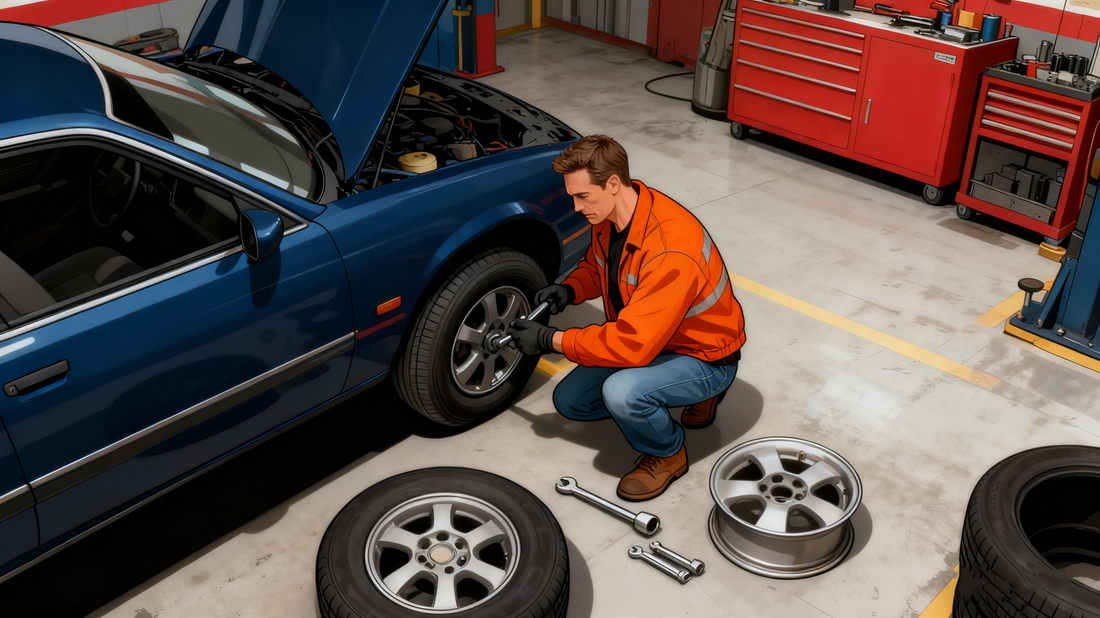
A Complete Guide to Torque Wrenches: Types, Reviews, and How to Choose
A Complete Guide to Torque Wrenches: Types, Reviews, and How to Choose
When it comes to precision tightening, a torque wrench is one of the most essential tools for mechanics, engineers, and DIY enthusiasts alike. It ensures that bolts and nuts are tightened to the correct specification — not too loose to cause failure, and not too tight to damage components. Whether you’re working on a car engine, assembling a bicycle, or installing machinery, understanding how torque wrenches work and which type to choose can make a big difference in performance and safety.
1. What Is a Torque Wrench?
A torque wrench is a precision tool designed to apply a specific amount of torque to a fastener, such as a bolt or nut. It ensures consistent clamping force, preventing under- or over-tightening that could lead to equipment failure or inaccurate assembly.
Torque is usually measured in Newton-meters (Nm) or foot-pounds (ft-lbs), and most wrenches allow users to set the desired torque value before tightening.
2. Common Types of Torque Wrenches
There are several types of torque wrenches, each suited for different applications:
(1) Beam Torque Wrench
- How it works: Uses a calibrated scale and pointer to display the torque being applied.
- Pros: Simple, affordable, and durable.
- Cons: Requires line-of-sight reading, less convenient in tight spaces.
- Best for: Basic mechanical work and occasional use.
(2) Click-Type Torque Wrench
- How it works: Emits a “click” sound when the preset torque value is reached.
- Pros: Accurate, easy to use, and widely available.
- Cons: Needs periodic calibration to maintain accuracy.
- Best for: Automotive, bicycle, and general workshop applications.
(3) Digital (Electronic) Torque Wrench
- How it works: Displays torque readings on a digital screen and often includes LED or buzzer alerts.
- Pros: High precision, easy to read, and often supports multiple units (Nm, ft-lbs, in-lbs).
- Cons: Higher cost; requires batteries.
- Best for: Professional mechanics and quality control applications.
(4) Split-Beam or Dial Torque Wrench
- How it works: Uses a mechanical dial or beam mechanism for quick torque adjustments.
- Pros: Very reliable and low maintenance.
- Cons: Usually bulkier and more expensive than basic models.
- Best for: Industrial and high-volume usage.
3. How to Choose the Right Torque Wrench
When selecting a torque wrench, consider the following factors:
Torque Range
Choose a wrench that covers your most frequently used torque values.
For example:
- Bicycles: 2–24 Nm
- Cars and motorcycles: 10–200 Nm
- Heavy machinery: 100–1000 Nm
Accuracy
Look for a torque wrench with ±3% to ±1% accuracy for professional applications. Digital wrenches typically offer the highest precision.
Build Quality
A sturdy housing, ergonomic handle, and high-quality ratchet mechanism will ensure longer life and better consistency. Carbon fiber and chrome vanadium steel are popular for durability and comfort.
Ease of Use
If you work frequently in low-light or tight spaces, a digital wrench with backlit display or audible alerts can be a great advantage.
Calibration Certificate
A certified calibration ensures the wrench meets its accuracy specifications. Always check that your wrench includes a recent calibration certificate, and re-calibrate every 6–12 months depending on usage.
4. Maintenance and Care Tips
To extend your torque wrench’s lifespan:
- Always store it at the lowest torque setting when not in use.
- Avoid using it as a breaker bar — it’s not designed for loosening bolts.
- Recalibrate periodically to maintain accuracy.
- Clean after each use and keep it in its protective case.
5. Final Thoughts
A torque wrench is more than just a tool — it’s a precision instrument that ensures safety, reliability, and performance in every project. Whether you opt for a classic click-type wrench or a modern digital model, investing in a high-quality and properly calibrated torque wrench will pay off with accurate, consistent results for years to come.
If you’re looking for a dependable, easy-to-use digital torque wrench with professional accuracy, Uharbour offers a full range of models for automotive, bicycle, and industrial applications — each tested and calibrated for precision you can trust.
